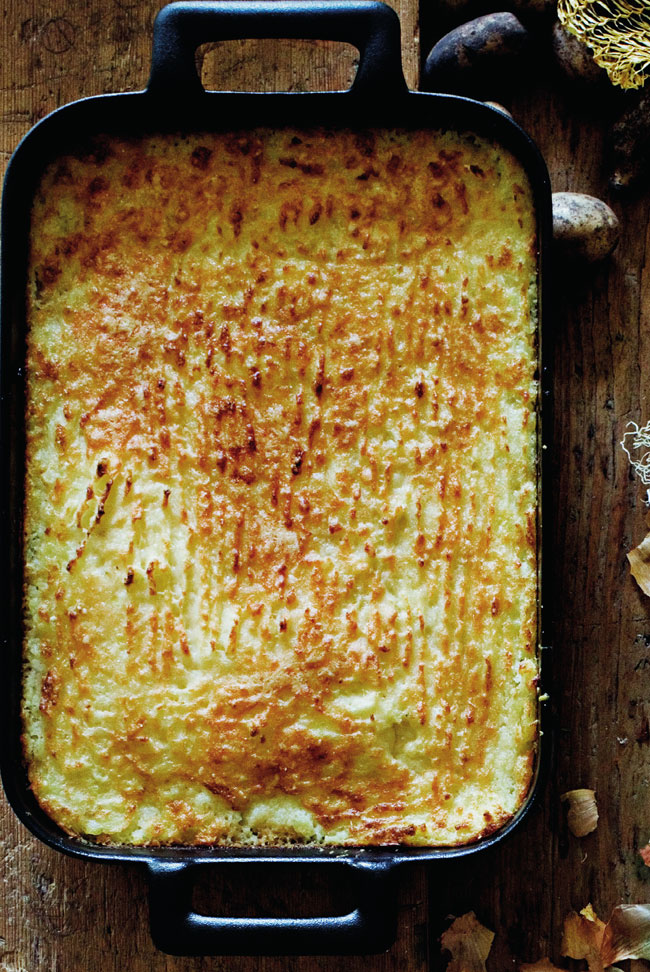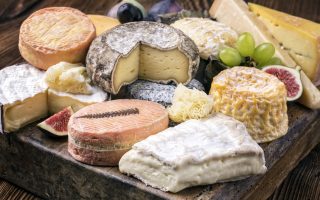Duck Confit Parmentier


Confit de canard has become something of a cliché: It’s standard on most bistro menus in France and in French restaurants around the world, and you can even buy it canned in most supermarkets. But when it’s good, it exemplifies in one bite what French cooking is all about: beautiful ingredients cooked in a traditional, often simple way. I like to serve this national dish to guests in its purest form, with roast potatoes and mustard. It’s always a hit. As good as duck confit is, sometimes I like to take it one step further toward culinary nirvana and turn it into a parmentier, or shepherd’s pie. That, of course, is another classic, but I find good versions of it hard to come by in restaurants. It’s usually decent enough but rarely breathtaking— and believe me, this dish can be breathtaking. This parmentier is only as good as the confit de canard you start with (whether you make it yourself or not), and the most important thing is to keep it moist and use a decent wine for the cooking. Serve with a crisp green salad on the side.
SERVES 4
For the duck
4 duck confit legs, homemade (see the recipe below) or store-bought
1 onion, thinly sliced
2 shallots, thinly sliced
2 tablespoons butter
2 garlic cloves, minced
A handful of finely chopped fresh parsley
2/3 cup / 160ml dry red wine
For the mashed potatoes
1.3–1.5 kg large russet potatoes (5 to 6), peeled
4 tablespoons unsalted butter, at room temperature
¼ cup / 30ml crème fraîche
Fine sea salt & freshly ground black pepper
1/2 cup / 60g freshly grated Parmesan cheese
✽ Preheat the oven to 180°c.
✽ Make the duck layer. Remove the skin and bones from the duck legs and shred the meat into bite-sized pieces.
✽ In a large sauté pan, cook the onion, shallots, and garlic in the butter over medium heat until it’s tender and slightly golden, for four to five minutes. Add the duck meat and parsley and cook for two more minutes. Pour in the wine and simmer to reduce for four to five minutes.Transfer to a 23×33cm baking dish.
✽ Make the mashed potatoes. Put the potatoes in a pot, cover with salted water, bring to a boil, and cook until they’re tender, for about 15 minutes. Drain the potatoes, return them to the pot, and mash with the butter and crème fraîche.
✽ Season with salt and pepper.
✽ Top the duck mixture with the mashed potatoes. With a fork, flatten the potatoes into an even layer and sprinkle with the Parmesan cheese.
✽ Bake the parmentier until it’s golden brown, for about 25 minutes.
Duck confit
SERVES 4
4 medium duck legs
Coarse sea salt & freshly ground black pepper
About 1¼ cups / 300g rendered duck fat
1 bay leaf
3 garlic cloves
3 sprigs of fresh thyme
3 tablespoons unsalted butter (if panfrying the legs)
✽ Sprinkle the duck legs all over with a generous amount of salt and pepper, and rub into the skin and flesh. Put in a baking dish or shallow bowl, cover with plastic wrap and refrigerate overnight.
✽ Rinse the duck legs under cold running water. Pat dry with a kitchen towel.
✽ In a pot just big enough to hold the legs in a single layer, melt the duck fat.
✽ Add the duck legs, bay leaf, garlic, and thyme and cook over medium-low heat at a steady gentle simmer (70° to 80°C) until the duck legs are cooked through and golden, for about two hours.
✽ Transfer the duck legs to a plate and strain the duck fat through a sieve into a wide pan or baking dish, just large enough to hold the legs. Add the duck legs to the fat and let cool. Ideally, there should be a thin layer of fat covering the legs. The duck can be refrigerated for up to two weeks.
✽ To serve the legs on their own, in a sauté pan, fry them in the butter until slightly crisp and golden, three to four minutes on each side. Serve immediately.
Recipe from cookbook ‘A Kitchen in France‘ by Mimi Thorisson
Originally published in issue 115 of FrenchEntrée Magazine
Share to: Facebook Twitter LinkedIn Email
By FrenchEntrée
Leave a reply
Your email address will not be published. Required fields are marked *



